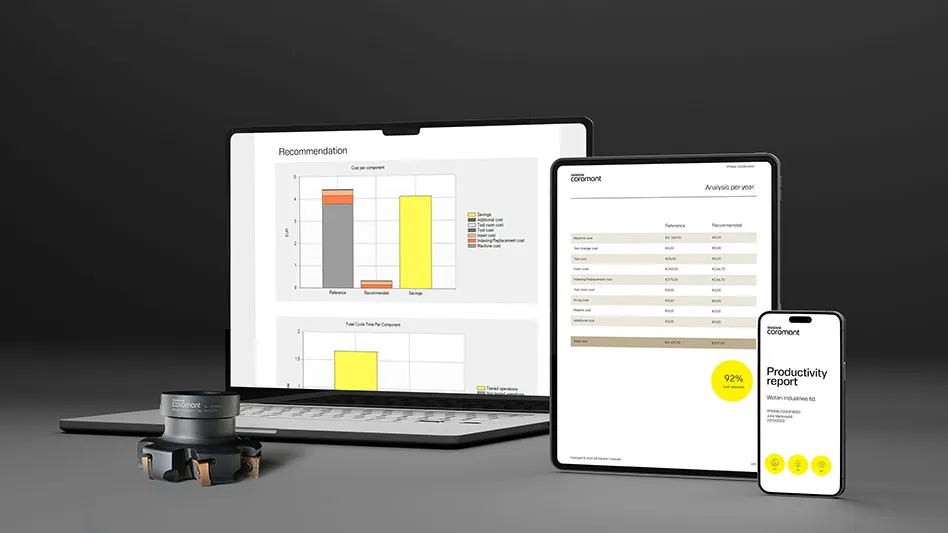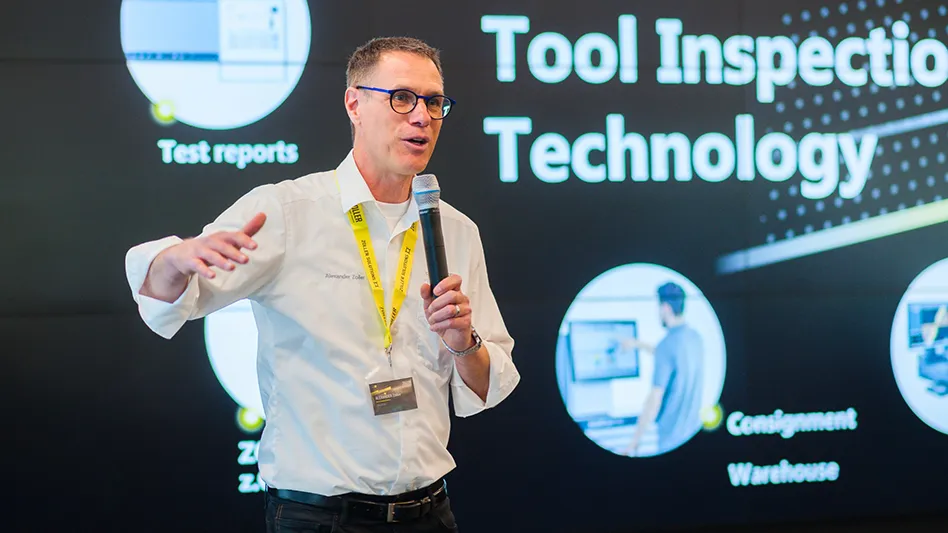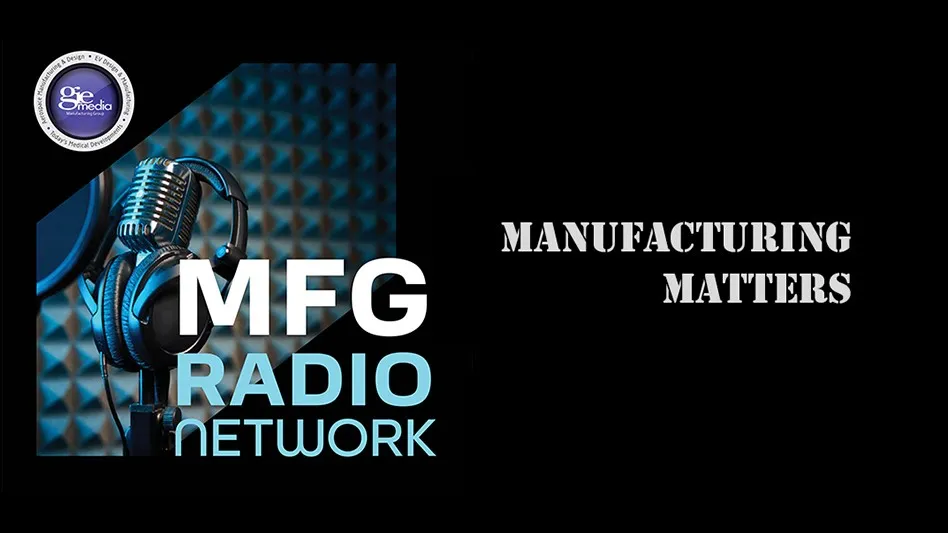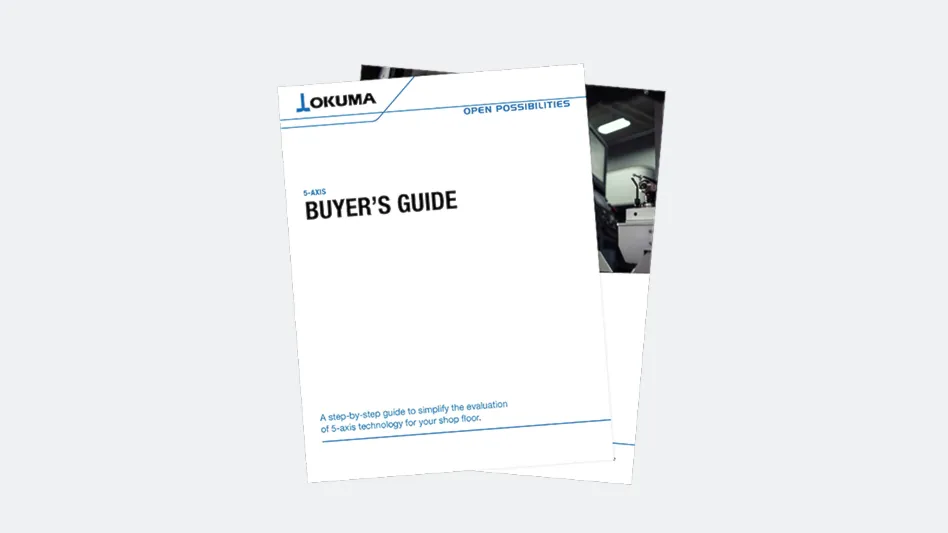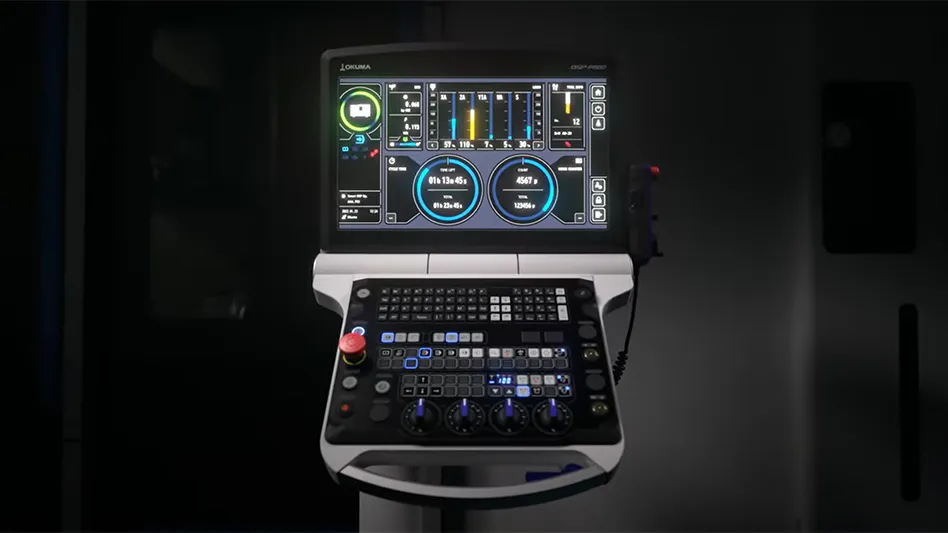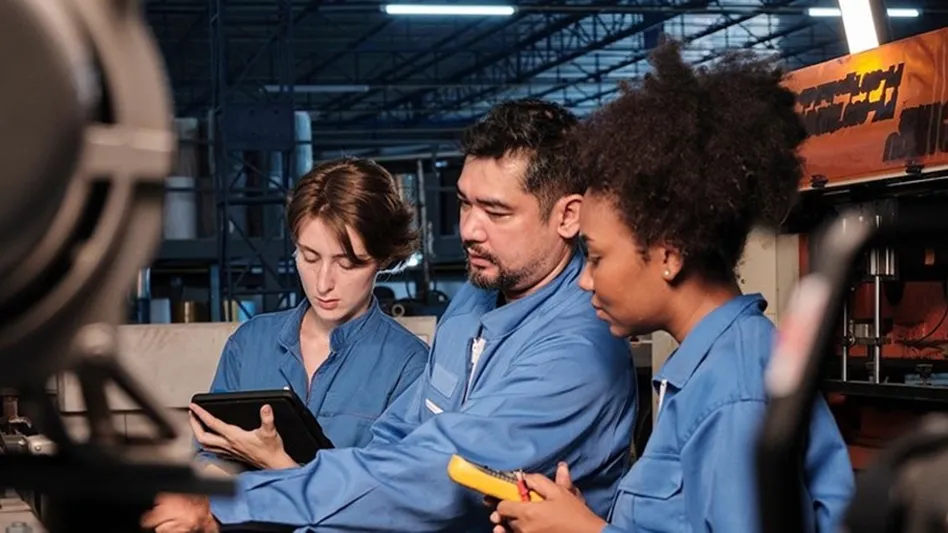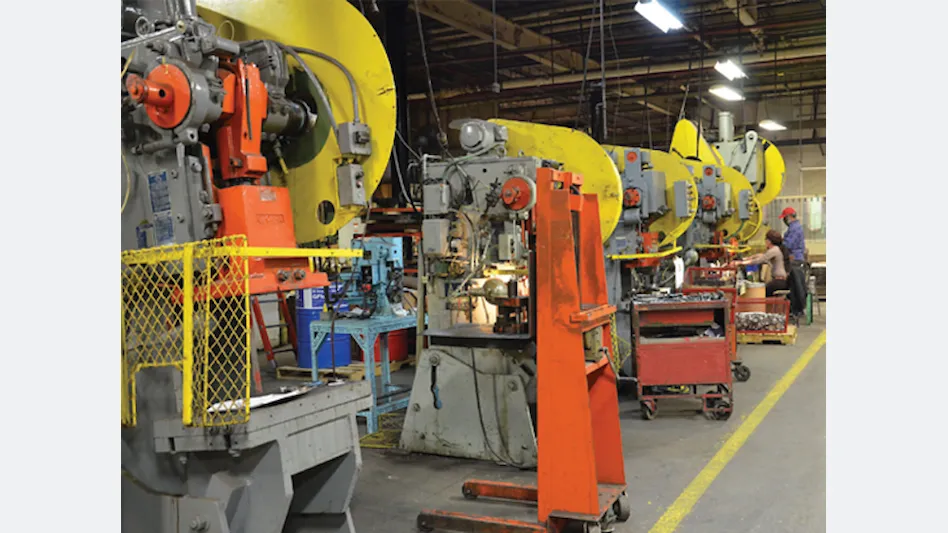
PHOTO COURTESY OF DUREX INC.
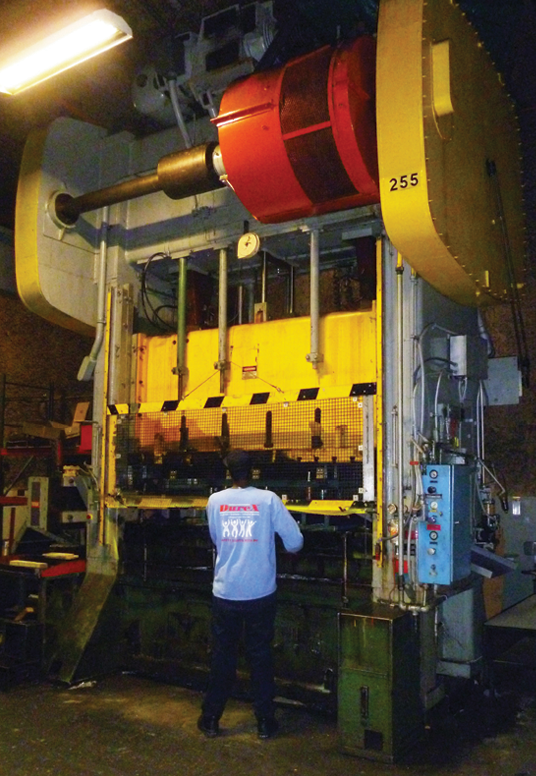
Tooling choices determine the cost of producing stamped metal parts for medical equipment, such as carts, cabinets, enclosures, and user workstations that safeguard sensitive controls, electronics, or hardware. Expensive hard tooling offers the lowest cost-per-part by ensuring high productivity, while more-affordable soft tooling is slower.
Unfortunately, estimating initial production requirements for new products is challenging; forecasts are often conservative or unrealistically high. With this inevitable uncertainty, original equipment manufacturers (OEMs) are hesitant to invest significant dollars in hard tooling, which can cost tens of thousands of dollars upfront. Instead, less expensive soft tooling options may be selected initially, even if they increase the price-per-part.
At the appropriate demand tipping point, medical equipment and instrument manufacturers should transition to hybrid tooling, staged tooling, or progressive dies that speed turnaround time and drive down the price.
This laddering-up of tooling options requires assessing at each plateau whether greater upfront investment in tooling will pay off with a relatively quick return on investment (ROI). Since tooling plays such a key role in this equation, it also means working closely with OEMs to evaluate the best available tooling options at any time.
“As production requirements increase, transitioning to a more efficient type of tooling can save some medical equipment manufacturers tens of thousands of dollars a year with a ROI measured in weeks or a few months,” says Bob Denholtz, president of DureX Inc., an ISO 9001 registered contract metal manufacturing company with a 120,000ft2 facility in New Jersey. “Any good metal parts supplier should be able to help the OEM determine the most cost-effective tooling for their situation.”
Although tool selection for the medical industry involves variables such as part size, metal thickness, complexity, and finish, the cost-per-part often depends on the type of tooling used. This progression generally ranges from soft to hard tooling, hybrid approaches, staged tooling, and fully progressive dies.
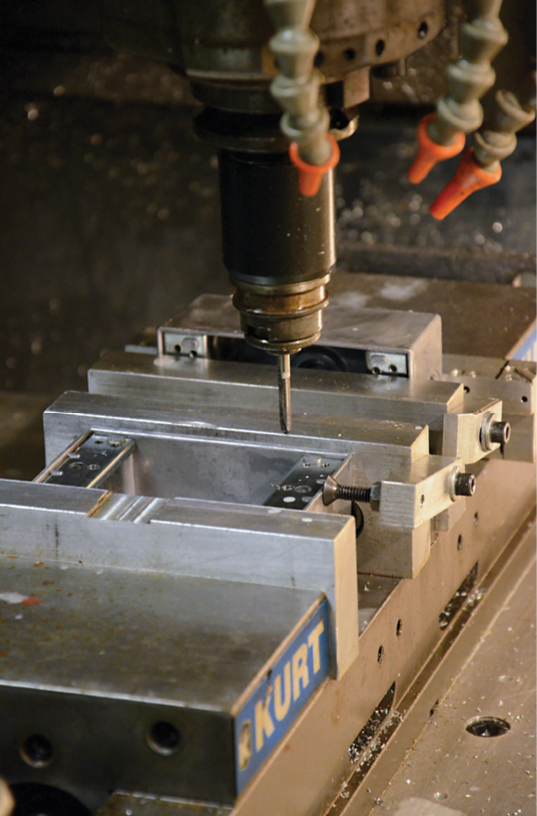
Soft tooling
Low-volume part manufacturing for the medical industry often involves soft tooling – tools made from pre-hardened steel or other materials – for sheet metal fabrication. Usually this entails having a flat or slightly formed part that has holes, slots, or tabs punched in it by a CNC laser or turret punch press, followed by bending using a press brake.
“Soft tooling typically costs $75 to $500 but can cost up to $2,000 to $3,000 for more complex parts,” Denholtz says. “This can work for medical part prototyping and low-volume production orders. However, it can take several minutes of machine time to make each part, depending on its complexity, so the cost per part is higher.”
One strategy for medical equipment manufacturers to lower or eliminate soft tooling cost is to borrow the tooling from a supplier. Because DureX has been serving a variety of markets for more than 30 years, they have built up an inventory of soft tools in many sizes and shapes. When appropriate, these tools can be put back in service, eliminating tool costs.
Hard tooling
When critical tolerances are required and/or volumes increase to 15,000 units or more annually, OEMs often benefit from moving from soft tooling to hard tooling – tools precision-machined from hardened steel – to reduce costs. According to Denholtz, hard tooling can cost $5,000 to $300,000 depending on size, complexity, and whether it is designed to produce a finished part.
“One OEM started at 500 parts per month with soft tooling,” Denholtz says. “However, when production requirements increased to 4,000 parts a month, we suggested they move to hard tooling to reduce the price from $22 to $15 a part. With a hard tooling cost of about $85,000, they achieved ROI in about four months.”
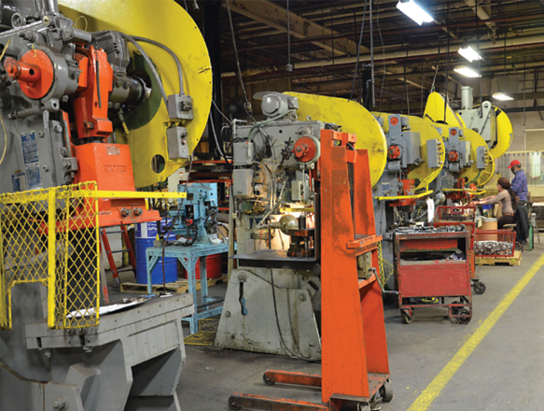
Hybrid tooling
As the name implies, hybrid tooling is a combination of soft and hard tooling. Depending on the part, it might begin as a flat piece of metal that is punched or formed with a soft tool, then further formed by a hard tool.
For example, an enclosure could be started in a turret that punches all the holes and slots before it is moved to a hard die that forms up the sides into a box in one operation.
“Instead of putting a flat piece of metal in a brake and hitting it four times to bend the two sides and two ends, we could use a die and hit it once. So, it only takes 30 seconds or less to make the entire part instead of 2 minutes,” Denholtz explains.
Staged tooling
To create metal parts for medical equipment manufacturers at even greater speed and volume as well as lower price per part, staged tooling can be used. Metal parts move between multiple stage tools, so the work is performed in unlimited processes that use hard tooling.
“For example, instead of taking 5 minutes in a machine to punch all the features individually using a soft tool, we could make a blanking die and punch everything in one hit in seconds,” Denholtz says. “Then we could put it into a forming die and form it into shape.”
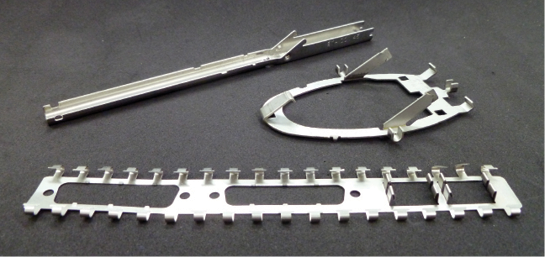
Progressive dies
The fastest, highest-volume part production can be achieved by a progressive die. This accomplishes multiple operations in a single process using hard tooling. Typically, a metal coil feeds material into the press, and it stamps material into shape as it progresses through the machine – adding a new feature with each stamping until a finished part exits the machine.
Denholtz gives an example of a customer that was spending about $125 for a metal card cage that held circuit boards.
“When volume rose to 1,000 parts a week, we reduced the cost to $55 per cage by switching to multiple staged tools,” Denholtz explains. “Although the hard tooling cost was substantial – about $350,000 – the OEM achieved ROI in only 5 to 6 weeks.”
Value added
Medical equipment manufacturers may benefit from working with a contract manufacturer with added-valued services such as finishing and assembly to further streamline the process.
“The ability for a contract manufacturer to take a medical part from cradle-to-grave from design through prototype, into full production of a fully assembled, finished product – even including fulfillment – can further reduce costs and allow the OEM to focus more on core competencies,” Denholtz says.
Whatever the scope of manufacturing, medical equipment manufacturers can benefit by working closely with metal part suppliers to optimize the tooling for the job. In doing so, they can significantly reduce per-part costs with a surprisingly fast ROI.
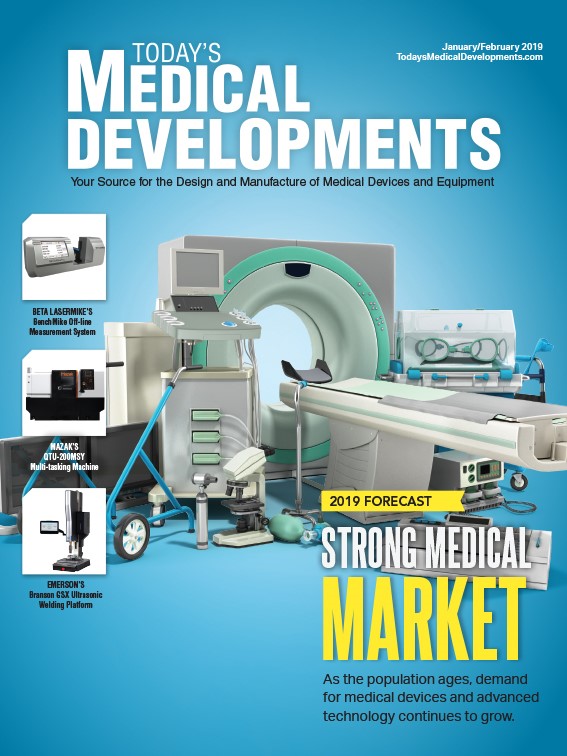
Explore the January February 2019 Issue
Check out more from this issue and find you next story to read.
Latest from Today's Medical Developments
- Tsugami America’s Technical Center in Minnesota
- RobOps Copilot for AI-powered robot optimization
- US companies invest heavily in robots
- #34 Lunch + Learn Podcast - Cobots' potential to revolutionize aerospace manufacturing with Techman Robots
- Universal Robots announces seamless integration with Siemens PLCs
- This month's Manufacturing Lunch + Learn is May 16
- Ultrahuman wearable technology
- Additive Manufacturing for Aircraft Cockpit Interior Components
